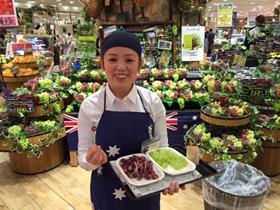
The value of Australian horticulture exports to South Korea have increased 230 per cent to A$25m (US$17.3m) since a free trade agreement (FTA) came into force in December 2014, according to data analysed by Fresh Intelligence Consulting.
Macadamia nuts have been among the big movers, up 217 per cent to A$7.56m and cherries, up from a negligible A$0.07m (US$0.04m) to A$3.25m (US$2.25). For cherries, a 24 per cent tariff was eliminated immediately when the FTA came into force, while the 30 per cent tariff on macadamias fell to 18 per cent in 2015 and will be eliminated by 2018.
Exports of fresh oranges lifted from A$0.12m (US$0.08m) to A$1.17m (0.81m) by July and could rise much higher, as the season only started in June. The tariff on navel oranges dropped from 50 per cent to 25 per cent in 2015.
Australia’s table grape trade into the Asian nation lifted from A$0.02m (US$0.01m) to A$1.95m (US$1.35m), as the tariff dropped from 45 per cent to 24 per cent. This complemented the first full season of quarantine access for Australian grapes into South Korea. However, table grapes delivered after 1 May each year will continue to attract the 45 per cent tariff.
In more positive news for the table grape industry, exports to Japan rose 1025 per cent to A$6.6m since an FTA was signed late last year. It should be noted that 2015 was the first full season of quarantine access into the Japanese market, after trial shipments were conducted at the conclusion of the 2014 season.
Citrus exports, which until this year accounted for over 98 per cent of fresh fruit exports to Japan, were 6 per cent lower at the end of July, although this is barely mid-way through the 2015 season. The tariff reductions have had less immediate impact on trade to Japan than to South Korea as they are starting from lower base rates and have generally longer reduction phases.



